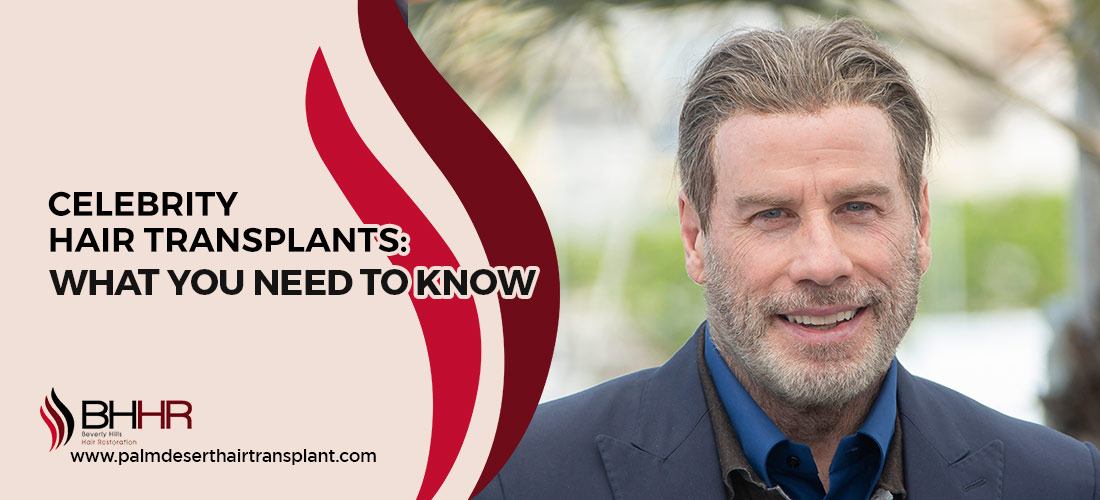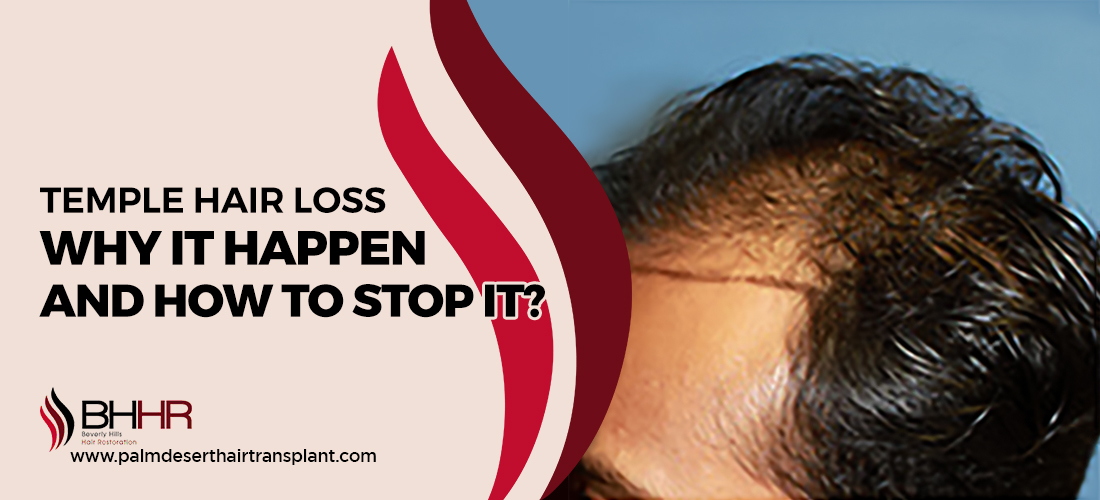Are Hair Transplants Permanent Solution for Hair Loss?
Home / Hair Transplant / Are Hair Transplants Permanent Solution for Hair Loss?
Updated On : November 06, 2025 | Category : Hair Transplant | Author: Beverly Hills Hair Restoration Team

Hair loss is a universal concern that affects both men and women, often leading to a significant dip in self-confidence and self-image. Whether it’s caused by genetics, hormonal imbalances, stress, or ageing, losing hair can feel disheartening. Over the years, many treatments—from topical products to medications—have promised to reverse or slow hair loss, but few deliver lasting results.
One treatment that has consistently proven effective is the hair transplant. It provides a natural, long-term option for hair restoration. But the real question remains: Do hair transplants last forever, or is their permanence just a myth? Let’s explore how they work, what affects their longevity, and what you can realistically expect.
How Hair Transplants Restore Natural Hair
Healthy hair follicles are transferred from areas with robust growth, such as the sides or rear of the scalp, to thinning or bald areas via a minimally invasive and secure surgical procedure known as a hair transplant. These follicles continue to grow naturally after being transplanted into the new site, giving a complete, realistic outcome that integrates well with your current hair.
There are two main techniques that use at BHHR in Palm Desert:
- Smart FUT? (Follicular Unit Transplantation): A strip of scalp is removed, divided into individual follicles, and implanted. It allows many grafts in a single session but leaves a thin, linear scar.
- Smart FUE? (Follicular Unit Extraction): Individual follicles are extracted with micro-punch tools and implanted. FUE is less invasive, heals faster, and leaves minimal scarring.
Both methods deliver natural, lasting results, with the main differences in extraction, healing, and scarring.
Factors Affecting Longevity of Results
Several elements play a role in determining how long your hair transplant results will last:
-
Surgeon’s Expertise
The experience of a hair transplant surgeon is the secret to long-term outcomes. Permanent, natural-looking outcomes from precisely placed grafts and a carefully designed hairline.
-
Donor Hair Quality
Donor hair density and quality are two key variables that determine the success and durability of a hair transplant.
-
Patient’s Age and Hair Loss Stage
Younger patients with progressive hair loss may need touch-up sessions later in life. It’s best to undergo a transplant when your hair loss pattern has stabilised.
-
Post-Surgery Care
Following the aftercare routine provided by your surgeon—like gentle washing, avoiding direct sunlight, and using prescribed medications—helps the transplanted follicles take root securely.
-
Lifestyle and Health
Nutritional well-being, stress reduction, and abstaining from smoking or heavy drinking can all help in improved healing and hair growth.
Common Myths About Hair Transplants
Myth 1: Hair transplants look fake or unnatural
Fact: Modern techniques like Smart FUE and Smart FUT create natural-looking results. Our surgeons design the hairline based on your facial structure and natural growth pattern, making it nearly impossible to tell the difference between transplanted and existing hair.
Myth 2: Do hair transplants last forever — or will they fall out again?
Fact: Transplanted hair typically lasts a lifetime since it's harvested from areas that are not vulnerable to balding. Although the neighboring hair can become thinner with time, the transplanted follicles stay firm and permanent if well taken care of.
Myth 3: Hair transplants are only for men
Fact: Women also experience thinning and pattern hair loss and can benefit equally from modern transplant procedures. Customized techniques make it suitable for both genders.
Myth 4: Hair transplants are painful and risky
Fact: With advanced anesthesia and minimally invasive tools, discomfort is minimal. The procedure is safe, and most patients return to normal activities within days.
Myth 5: Hair transplants give instant results
Fact: Growth takes time. Transplanted hair typically sheds within the first few weeks, then begins to regrow permanently over the next 4–12 months. Full, natural results appear within a year.
What to Expect After a Hair Transplant: The Growth Phases
After a hair transplant, the growth cycle follows three phases:
- Shedding phase (2–4 weeks): The transplanted hair falls out temporarily as part of the natural healing process.
- Dormant phase (1–3 months): The follicles rest before new growth begins.
- Growth phase (4–12 months): New, strong, and healthy hair starts to grow permanently.
Maintenance After a Hair Transplant
Even though transplanted hair is permanent, maintenance ensures your results remain consistent. Here’s how to care for new hair:
- Follow the aftercare instructions: During the first few weeks after your hair transplant, avoid scratching, strenuous exercise, and direct sunlight to protect the healing grafts.
- Medications: Use doctor-recommended treatments to strengthen existing hair and prevent further loss.
- Regular check-ups: Schedule follow-ups to monitor growth and scalp health.
- Healthy lifestyle: Eat a balanced diet rich in proteins, vitamins, and minerals. Reduce stress and avoid smoking, which can affect blood circulation to hair follicles.
- Scalp hygiene: Keep your scalp clean and use mild shampoos to prevent infections.
When to Consider a Hair Transplant
A hair transplant may be ideal if:
- You have stable hair loss (not rapidly progressing).
- You possess sufficient donor hair for transplantation.
- Non-surgical treatments haven’t worked.
- You want a natural, permanent restoration.
However, if your hair loss is still evolving, your surgeon may recommend waiting or combining surgery with medical therapy to stabilise shedding first.
Who Is a Good Candidate for a Hair Transplant?
Not everyone experiencing hair loss is immediately suitable for a transplant. You’re an ideal candidate if:
- Your hair loss pattern is stable.
- You have enough healthy donor hair at the back or sides of your scalp.
- You’re in good general health.
- You have realistic expectations about results.
- You’re willing to follow post-surgery care and, if needed, take medications to preserve existing hair.
If your hair loss is advancing quickly, your surgeon might recommend postponing the procedure or pairing it with non-surgical treatments to stabilize shedding first.
Expert Insight: Realistic Expectations and Long-Term Success
Dr John Kahen, a celebrity hair restoration doctor in Palm Desert, stresses that hair transplants are life-altering if well-planned. In his words: "The longevity of a hair transplant relies on an individualized approach — recognizing the patient's hair loss pattern, donor capacity, and future evolution.". With good planning and attention, outcomes can last an entire lifetime."
Final Thoughts: Is A Hair Transplant Permanent?
In most cases, yes. Transplanted hair generally lasts a lifetime because it comes from areas naturally resistant to thinning. Once established, it grows just like your own hair — you can cut, style, and maintain it freely. However, lasting results depend on your genetics, and how well you care for your scalp. While some natural thinning may occur in nearby areas over time, transplanted follicles usually remain healthy and strong for decades. In short, a hair transplant does more than restore your hair — it restores your confidence. To enjoy the best long-term results and maintain a consistent care routine.
Wondering “Are hair transplants permanent?” Contact us today at 760.501.0080 for personalized recommendations and to schedule your free consultation. Discover the truth about lasting hair restoration and begin your journey toward natural, lifelong results.



